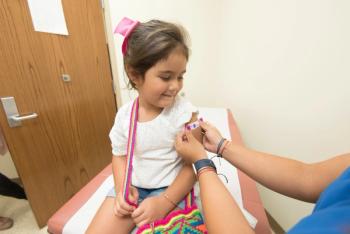
UV Light Disinfection: A New Infection Prevention Tool
The intersection of technology and infection control comes to life with UV robots.
In the battle against health care-associated infections and emerging infections, hospitals and infection prevention programs are constantly looking for new ways to prevent the transmission of organisms. From alcohol-based hand sanitizers to the advent of electronic surveillance systems, technology has helped infection preventionists (IPs) compete with increasing biotechnology in medicine. One of these new technologies tackles a particularly hard area for infection control—the environment.
Cleaning and disinfecting these environments, especially patient rooms, is an imperfect process prone to human error. Although we seek to do our best, the rapid pace of health care and patient care means turning over a room after discharge is often a matter of life and death. Unfortunately, along with the fast pace often comes mistakes and, ultimately, it’s exceedingly hard to clean and disinfect every possible item and surface within a patient’s room. A new technology, though, is harnessing UV light to clean those hard-to-reach areas and even ceilings.
Although not an entirely new technology, Xenex robots use dozens of pulses of UV light to disinfect rooms following the manual cleaning process. “The UV light is absorbed by and fuses the DNA of microorganisms, causing the cell to break apart and dissolve, deactivating pathogens. A patient room can be disinfected in less than 15 minutes using this system,” according to a
The Xenex robots are rolled into patient rooms following a manual cleaning and involve 1-2 relocations within the room to ensure full disinfection. The UV light pulses are effective against a range of different organisms, including C diff, MRSA, and several other frequent hospital microbial offenders. Ultimately, the disinfecting robots offer an extra layer of germ-killing beyond what IP’s might be capable of.
From the IP perspective, I was skeptical at first but have been pleasantly surprised with the ease of use and frankly, the way staff are engaged and excited about the robots. Although the monitoring phase is still underway, it has been fascinating to see how patients react to the use of the robots and prefer the extra layer of infection prevention effort. California Pacific Medical Center recently made the investment in 7 germ-zapping robots. The facility has already seen a drop in infectious disease rates when the UV robot is used with other infection prevention efforts like hand-hygiene and training.
Although not the be all end all to a hospital’s infectious disease woes, this product can be a powerful tool in the infection prevention arsenal. I’m an IP who believes there is not 1 single tool we can use to halt infections; rather, infection prevention needs to be a collective effort between humans, tools, and technology. These Xenex robots are 1 of those tools that allow hospitals to truly clean and disinfect rooms instead of just the high-touch surfaces. Coupled with other efforts, like hand-hygiene and effective isolation precautions, the UV light robots offer the chance to bring a hospital’s infection prevention efforts into the era where tech and health care workers work in unison against microbes.
Newsletter
Stay ahead of emerging infectious disease threats with expert insights and breaking research. Subscribe now to get updates delivered straight to your inbox.


















































































































































































































































































